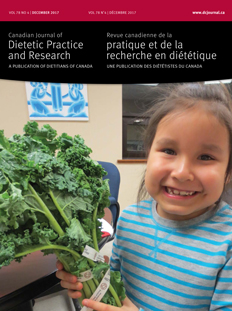Abstract
Purpose: We compared food insecurity status, coping strategies, demographic characteristics, and self-rated health of international and domestic postsecondary students requesting emergency food hampers from a campus food bank (CFB).
Methods: We collected data from a cross-sectional convenience sample of domestic and international students who accessed the CFB at the University of Alberta.
Results: Food insecurity was prevalent (international students: n = 26/27 (96.2%), domestic students: n = 31/31 (100%)). Compared with their domestic peers, international students were less likely to rate their mental health negatively (14.8% vs 38.7%, P = 0.04). The primary income source was government loans (54.8%) for domestic students and research assistantships (33.3%) for international students. To cope with not having enough money for food, the majority of both student groups delayed bill payments or buying university supplies, applied for loans or bursaries, purchased food on credit, or worked more. International students were less likely to ask friends or relatives for food (48.1% vs 77.4%, P = 0.02).
Conclusions: Domestic and international students mostly used similar coping strategies to address food insecurity; however, they paid for their education using different income sources. Distinct strategies for international and domestic students are required to allow more students to cover their educational and living expenses.
Résumé
Objectif : Nous avons comparé le statut d’insécurité alimentaire, les stratégies d’adaptation, les caractéristiques démographiques et l’état de santé auto-évalué d’étudiants postsecondaires canadiens et internationaux qui avaient recours aux paniers alimentaires d’urgence de la banque d’alimentation de leur campus universitaire (BAC).
Méthodes : Nous avons recueilli des données auprès d’un échantillon de commodité transversal d’étudiants canadiens et étrangers qui faisaient appel à la BAC de l’Université de l’Alberta.
Résultats : L’insécurité alimentaire était prévalente (étudiants internationaux : n = 26/27 [96,2 %]; étudiants locaux : n = 31/31 [100 %]). Comparativement à leurs collègues canadiens, les étudiants étrangers étaient moins susceptibles de qualifier leur santé mentale de mauvaise (14,8 % vs 38,7 %; p = 0,04). La principale source de revenus était les prêts gouvernementaux (54,8 %) pour les étudiants canadiens et les postes d’assistant à la recherche (33,3 %) pour les étudiants étrangers. Pour compenser le manque d’argent pour se nourrir, la plupart des étudiants, peu importe leur origine, retardaient le paiement de factures ou l’achat de matériel universitaire, demandaient des prêts et bourses, achetaient des aliments à crédit ou travaillaient davantage. Par ailleurs, les étudiants internationaux étaient moins susceptibles de demander de la nourriture à leurs amis ou à leur famille (48,1 % vs 77,4 %; p = 0,02).
Conclusions : Les étudiants canadiens et étrangers utilisaient en grande partie des stratégies similaires pour composer avec l’insécurité alimentaire. Cependant, ils se servaient de sources de revenus différentes pour payer leurs études. Des stratégies distinctes pour les étudiants canadiens et étrangers sont nécessaires pour permettre à un plus grand nombre d’entre eux de couvrir les dépenses liées à leur éducation et à leur vie courante.



